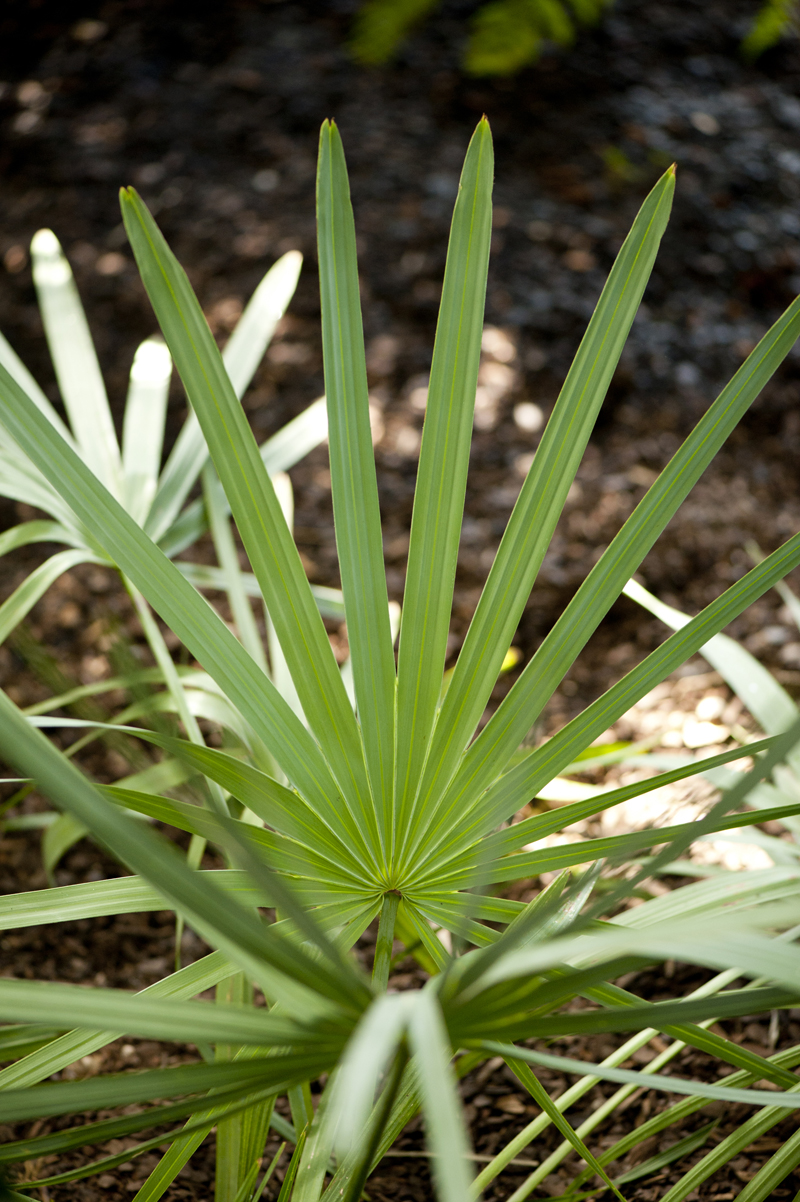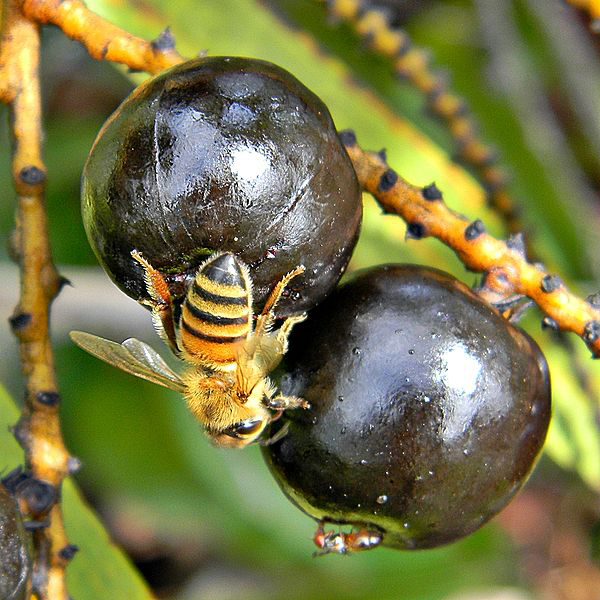Buyer Beware: What’s Inside A Bottle of Saw Palmetto Supplement?
Posted in Applied Science on February 13, 2014 by Damon Little
Damon P. Little, Ph.D., is Assistant Curator of Bioinformatics in The Lewis B. and Dorothy Cullman Program for Molecular Systematics. In addition to his research projects involving large sets of plant DNA data, he studies the cypress family of conifers.

Saw palmetto is the third best-selling herbal supplement in the United States, with sales totaling more than $31 million in 2012, but are the men who buy these supplements getting saw palmetto or something else?
That was the question my collaborator and I set out to answer when we extracted DNA from 34 saw palmetto supplements that we bought at retail stores in New York City and online. By comparing the DNA sequences of the supplements with DNA from samples of saw palmetto and its close relatives, we would find out whether the supplements were genuine or not.
Men take supplements made from the fruit of saw palmetto (Serenoa repens, a member of the palm family) to alleviate the symptoms of an enlarged prostate. Almost all commercial saw palmetto fruit is harvested from wild plants that can be found throughout the southeastern United States (Alabama, Florida, Georgia, Louisiana, Mississippi, and South Carolina). Several clinical studies have tried to determine if saw palmetto is beneficial, but the results remain inconclusive.
Myself and Marc Jeanson, of the National Museum of Natural History in Paris, were drawn to study saw palmetto herbal supplements because of the results of a similar project I worked on involving another popular supplement, black cohosh, which is taken to treat menstrual symptoms. In that case, 25 percent of the “black cohosh” supplements we purchased did not contain the correct species.

Marc and I feared that a limited supply of wild saw palmetto plants combined with a powerful profit motive might tempt unscrupulous suppliers to substitute the fruits of other palms for saw palmetto fruit. It’s easy to tell the difference between saw palmetto and similar palms when looking at whole plants, but it’s rather difficult to tell the species apart from the fruits alone. So it seems possible that a deceitful person could pass fruits of other species off as saw palmetto.
Our research, summarized in a paper published in Scientific Reports, found that 29 (85 percent) of the supplements we tested contained saw palmetto, two (six percent) contained related species that cannot be legally sold in the United States as herbal dietary supplements, and the identity of three (nine percent) could not be conclusively determined.
Our work suggests that consumers of herbal supplements should be wary. The US Food and Drug Administration (FDA) requires that all supplement manufactures have adequate safeguards in place to ensure that their labels accurately describe the supplement being sold. Clearly not all manufactures are able to meet this requirement.
This project was supported by funding from the Alfred P. Sloan Foundation.
For more information on the saw palmetto, try our Wild Medicine app, which provides detailed profiles for this and many other plants featured in the NYBG’s Enid A. Haupt Conservatory.
Saw palmetto fruit image courtesy of Wikimedia Commons

